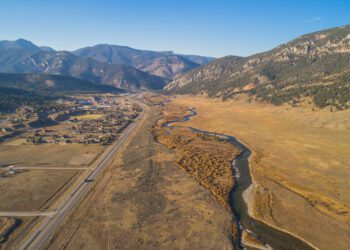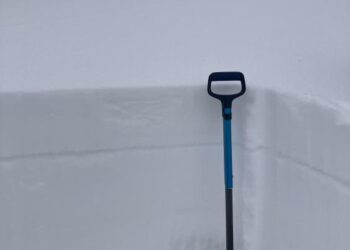By Alex Marienthal EBS CONTRIBUTOR
In my nine years of avalanche forecasting I have not seen a snowpack so weak. When I thought the snowpack was bad in past seasons, it wasn’t this bad. Almost every season we have weak, sugary faceted snow near the bottom of the snowpack, and at least half the time the weak snow is a problem all season. Professionals with longer careers have seen few, if any, winters with as poor stability as this winter. Doug Chabot, Gallatin National Forest Avalanche Center’s director, wrote the following in late January:
“This year’s snowpack is not to be trifled with. Unusual weather leads to unusual avalanche conditions, and that is certainly the case this year. This year is unique in my 29 years of avalanche forecasting in southwest Montana. Large avalanches are being triggered from hundreds of feet away long after the most recent snowfall. Even a few inches of new snow is causing us to elevate the danger. This is not like other seasons, and it’s making our entire forecasting team nervous. We are recalibrating our risk and notching back our travel plans due to a great deal of uncertainty about what it will take for things to become more stable.
Typically, the snowpack begins to adjust to new snow within a few days after a storm, avalanches and obvious signs of instability like whumpfing decrease, and we can start notching down the avalanche danger. This year is different. Our current snowpack is stabilizing at a rate that is agonizingly slow. The only real solution to our current snowpack situation is patience. With our current weak layers, every small storm is likely to raise the avalanche danger, and instability will lurk on many slopes long after the snow falls.”
A small, but mighty amount of snow fell in January and formed a slab on top of the weak layers that formed during an exceptionally dry early season. This created a very unstable snowpack and considerable to high avalanche danger. Avalanche activity was widespread, and many avalanches were easily triggered remotely, from a distance away on flatter terrain. It seemed like any steep slope would avalanche with the added weight of a person. The large amount and type of avalanches in January are strong evidence that these weak layers will be a problem all season.
This season it is important to remain diligent with cautious travel and conservative route selection, especially during snowstorms and for a few days after. The safest plan is to choose routes that avoid travel across or underneath slopes steeper than 30 degrees. When it snows, don’t let the excitement of fresh powder distract you from proper planning and safe decision making. Make sure to read the avalanche forecast for daily updates, especially each day before you head into the backcountry.
Alex Marienthal is an avalanche forecaster with the Gallatin National Forest Avalanche Center.











